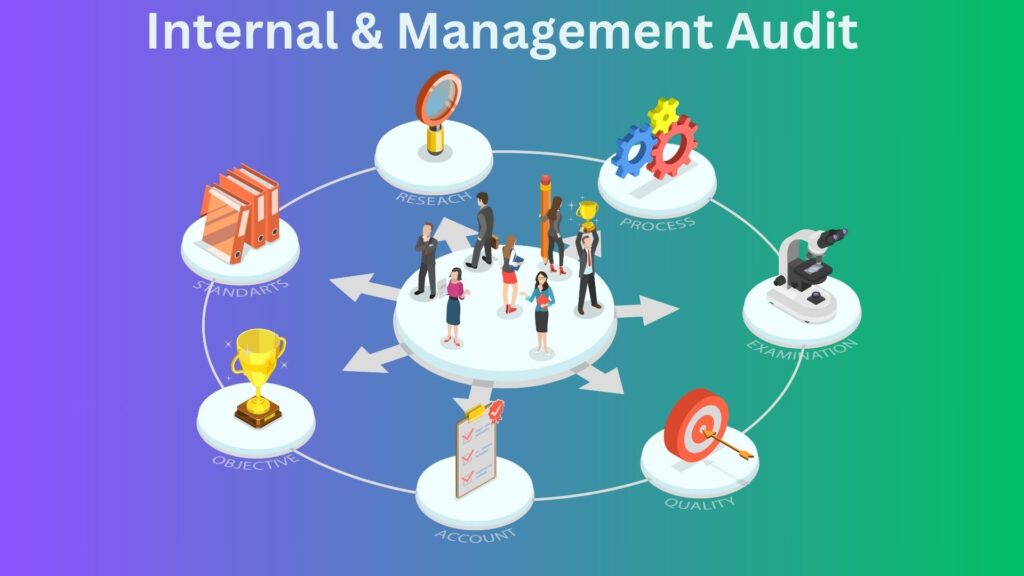In the intricate dance of modern business, where risks pirouette with opportunities and governance structures form the choreography, there exists a function often perceived as a silent guardian – Internal Audit. But is this perception accurate? Is internal audit merely a compliance watchdog, ticking boxes and ensuring adherence to rules? Or does its purpose extend far beyond this, venturing into the realm of strategic value creation and operational enhancement?
The truth, as is often the case, is nuanced and lies in the latter. While compliance certainly forms a critical facet of internal audit’s responsibilities, to define it solely by this function would be akin to describing a majestic oak tree merely as a source of firewood. To truly grasp the primary purpose of internal audit, we must delve deeper, beyond the surface level, into the very essence of what this profession strives to achieve within an organization.
Beyond the Checklist: Deconstructing the “Primary Purpose”
The Institute of Internal Auditors (IIA), the global standard-setting and professional body for internal auditing, provides a widely accepted definition that serves as our compass in this exploration. It defines internal auditing as:
“…an independent, objective assurance and consulting activity designed to add value and improve an organization’s operations. It helps an organization accomplish its objectives by bringing a systematic, disciplined approach to evaluate and improve the effectiveness of risk management, control, and governance processes.”
Let’s unpack this definition, dissecting its core components to truly understand the primary purpose of internal audit:
1. Assurance and Consulting: A Dual Mandate for Value Creation
The definition immediately highlights a crucial duality – internal audit is not just about assurance, but also about consulting. This reflects the evolution of the profession from a primarily backward-looking, compliance-focused function to a forward-thinking, value-added strategic partner within the organization.
- Assurance Services: This is the traditional heartland of internal audit. Assurance engagements involve an objective assessment of evidence to provide independent opinions or conclusions about the entity, operation, function, process, system, or other subject matter. Think of it like an independent opinion on the reliability and effectiveness of something. This assurance can cover a vast spectrum, including:
- Financial Statement Audits: Providing assurance on the accuracy and fair presentation of financial reports (often in conjunction with external auditors, but with a different scope and focus, often more operational and control-focused within the entity).
- Compliance Audits: Assessing adherence to laws, regulations, policies, procedures, and contracts.
- Operational Audits: Evaluating the effectiveness and efficiency of operations, processes, and systems.
- IT Audits: Assessing the controls and security of information technology systems.
- Performance Audits: Evaluating the economy, efficiency, and effectiveness of programs, projects, or activities.
- Control Self-Assessments (CSA) Facilitation: Facilitating management’s assessment of controls within their own areas, with internal audit providing oversight and guidance.
The primary purpose of assurance services is to provide independent and objective assessments. This assurance builds trust and confidence within the organization and for external stakeholders (like boards, audit committees, regulators, and investors). It’s essentially a validation of the organization’s systems and processes.
- Consulting Services: In contrast to assurance, consulting is advisory in nature and is generally performed at the specific request of management. Consulting engagements are intended to add value and improve an organization’s governance, risk management, and control processes without the internal auditor assuming management responsibility. Think of this as expert advice and proactive recommendations. Consulting services can encompass:
- Risk Management Workshops: Facilitating workshops to identify, assess, and respond to organizational risks.
- Process Improvement Reviews: Advising on how to streamline processes for greater efficiency and effectiveness.
- Control Design and Implementation Assistance: Providing guidance in establishing robust and effective internal controls during the development of new systems or processes.
- Best Practice Benchmarking: Researching and providing insights into industry best practices for specific functions or processes.
- Due Diligence Reviews: Assisting with pre-acquisition reviews to assess risks associated with potential mergers or acquisitions.
- Strategic Planning Facilitation: Contributing an internal audit perspective to strategic planning exercises, particularly around risk and control implications of strategic choices.
The primary purpose of consulting services is to be a catalyst for positive change and improvement. It’s about leveraging internal audit’s expertise to help management enhance operations and achieve their objectives more effectively. It positions internal audit as a proactive partner, not just a reactive observer.
The Synergy: Assurance and Consulting in Harmony
While assurance and consulting are distinct, they are not mutually exclusive. In fact, they are often deeply intertwined and synergistic. Assurance engagements can identify areas where consulting services can be valuable. For example, an operational audit identifying a control weakness might lead to a consulting engagement where internal audit helps management design and implement a more effective control.
This duality allows internal audit to be both a reliable internal compass providing factual assessments and an agile strategic advisor guiding the organization towards better practices and improved performance.
2. Adding Value: The Heartbeat of Internal Audit’s Mission
The definition explicitly states that internal audit is “designed to add value…” This is not just a desirable outcome, but the very core purpose. But what does “value” mean in the context of internal audit? Value added by internal audit can manifest in numerous ways, including:
- Enhanced Organizational Effectiveness and Efficiency: By identifying areas for improvement in operations, processes, and controls, internal audit helps organizations operate more efficiently, reduce costs, minimize waste, and achieve strategic goals. This translates directly to improved bottom-line performance and greater organizational agility.
- Improved Risk Management: By proactively identifying, assessing, and providing insights into risks across the organization, internal audit helps management make more informed risk-based decisions. This reduces the likelihood of negative surprises, promotes risk-aware culture, and ultimately enhances organizational resilience and sustainability.
- Strengthened Internal Controls: Through evaluations of control design and operating effectiveness, and through consulting engagements focused on control improvement, internal audit plays a vital role in building a robust control environment. Strong internal controls are the bedrock of reliable financial reporting, operational efficiency, and compliance, protecting organizational assets and reputation.
- Enhanced Governance: Internal audit acts as a crucial pillar of good governance. By providing objective assessments and insights to the board and audit committee on risk management, control, and governance processes, internal audit strengthens oversight, accountability, and ethical culture within the organization. This, in turn, fosters stakeholder confidence and enhances corporate reputation.
- Better Decision-Making: By providing management with reliable, objective, and timely information and insights based on their independent assessments, internal audit empowers better decision-making at all levels of the organization. This leads to more strategic allocation of resources, more effective operational execution, and ultimately, improved organizational outcomes.
- Protection of Assets and Reputation: By identifying and mitigating risks, strengthening controls, and promoting ethical conduct, internal audit contributes directly to the protection of organizational assets (financial, physical, intellectual, human) and safeguards the organization’s reputation – a priceless asset in today’s interconnected world.
- Promoting a Culture of Continuous Improvement: Through its proactive and consultative approach, internal audit fosters a culture of continuous improvement within the organization. It encourages a mindset of seeking better ways of doing things, embracing innovation, and adapting to changing circumstances, driving organizational evolution and long-term success.
Value is not a static metric but a dynamic, evolving concept. What constitutes value in one organization may differ in another, and what is deemed valuable today may shift tomorrow. Therefore, effective internal audit functions must be agile, adaptable, and continuously attuned to the evolving needs and strategic priorities of their organizations to ensure they are consistently delivering relevant and impactful value.
3. Improving Operations: The Practical Impact of Internal Audit
The definition clearly articulates that internal audit is designed “to… improve an organization’s operations.” This is the practical, tangible outcome that flows from both assurance and consulting activities. Internal audit isn’t just about identifying problems; it’s about driving positive change that leads to better operations.
“Operations” is a broad term, encompassing all the processes and activities that an organization undertakes to achieve its objectives. Improving operations through internal audit can manifest in various ways, such as:
- Increased Efficiency: Streamlining processes, eliminating redundancies, reducing waste, and optimizing resource utilization to improve operational efficiency and reduce costs.
- Enhanced Effectiveness: Improving the design and implementation of processes and controls to better achieve desired outcomes and strategic goals.
- Reduced Risks: Identifying, assessing, and mitigating operational risks that could hinder the achievement of organizational objectives, thereby creating a more stable and predictable operating environment.
- Improved Quality: Assessing and enhancing processes to ensure higher quality outputs, products, and services, leading to increased customer satisfaction and brand loyalty.
- Greater Agility and Responsiveness: Helping organizations become more adaptable and responsive to changing market conditions, technological advancements, and evolving stakeholder expectations.
- Strengthened Accountability: Clarifying roles and responsibilities, improving performance monitoring and reporting, and fostering a culture of accountability throughout the organization.
- Enhanced Innovation: By challenging existing practices, identifying opportunities for improvement, and encouraging a culture of continuous learning, internal audit can indirectly foster innovation and help organizations stay ahead of the curve.
The primary purpose regarding operational improvement is therefore to be a catalyst for positive operational evolution. Internal audit strives to be more than just a “policeman”; it aims to be a “performance enhancer,” proactively contributing to organizational effectiveness and agility.
4. Risk Management, Control, and Governance Processes: The Foundational Triad
The definition concludes by stating that internal audit helps organizations achieve their objectives by evaluating and improving the “effectiveness of risk management, control, and governance processes.” These three interconnected concepts form the foundational triad upon which modern organizations are built, and they represent the core focus areas of internal audit’s mandate.
- Risk Management: This encompasses the processes and structures organizations employ to identify, assess, respond to, and monitor risks that could impact the achievement of their objectives. Internal audit’s role is to assess:
- Risk Identification: Are key risks across the organization being adequately identified and understood?
- Risk Assessment: Are risks being assessed in terms of their likelihood and potential impact in a robust and consistent manner?
- Risk Response: Are appropriate risk responses (accept, mitigate, transfer, avoid) being developed and implemented for significant risks?
- Risk Monitoring: Are risk management processes being continuously monitored and adapted to changing circumstances and emerging threats?
- Risk Appetite and Tolerance: Is the organization’s risk appetite and tolerance clearly defined and effectively communicated, and is risk-taking aligned with these parameters?
Internal audit’s primary purpose concerning risk management is to provide independent assurance that risk management processes are effective and contributing to the achievement of strategic objectives. It’s about helping the organization navigate the uncertainties of the business environment with greater awareness and resilience.
- Control Processes: These are the policies, procedures, practices, and organizational structures designed to provide reasonable assurance that organizational objectives will be achieved. Internal audit evaluates:
- Control Environment: The overall culture and tone of an organization regarding control, ethics, and integrity.
- Control Design Adequacy: Are controls appropriately designed to address identified risks at a process level?
- Control Operating Effectiveness: Are controls operating as intended and consistently applied?
- Control Monitoring: Are controls being monitored and evaluated for ongoing effectiveness and adapted as needed?
- Control Efficiency: Are controls designed and implemented in a way that is efficient and not overly burdensome to operations?
Internal audit’s primary purpose regarding control processes is to provide independent assurance that internal controls are adequately designed and operating effectively to mitigate risks and facilitate the achievement of organizational objectives. It’s about ensuring the organization has robust defenses in place to deter errors, fraud, and inefficiencies.
- Governance Processes: This encompasses the structures and processes by which organizations are directed and controlled. It includes the roles and responsibilities of the board of directors, audit committee, senior management, and other key stakeholders. Internal audit assesses:
- Governance Structure: Is the governance structure clear, well-defined, and conducive to effective oversight and accountability?
- Governance Processes: Are governance processes (like board oversight, audit committee functions, ethical conduct policies, stakeholder communication) operating effectively and promoting good governance practices?
- Ethical Culture: Is there a strong organizational culture that promotes ethical conduct, integrity, and compliance with laws and regulations?
- Accountability Framework: Is there a clear accountability framework in place, with defined roles, responsibilities, and performance expectations?
- Communication and Information Flow: Is information flowing effectively within the organization and to relevant stakeholders to support effective governance and decision-making?
Internal audit’s primary purpose regarding governance processes is to provide independent assurance that governance structures and processes are sound and support the organization in achieving its strategic objectives ethically and responsibly. It’s about helping the organization uphold high standards of corporate conduct and build trust with all stakeholders.



